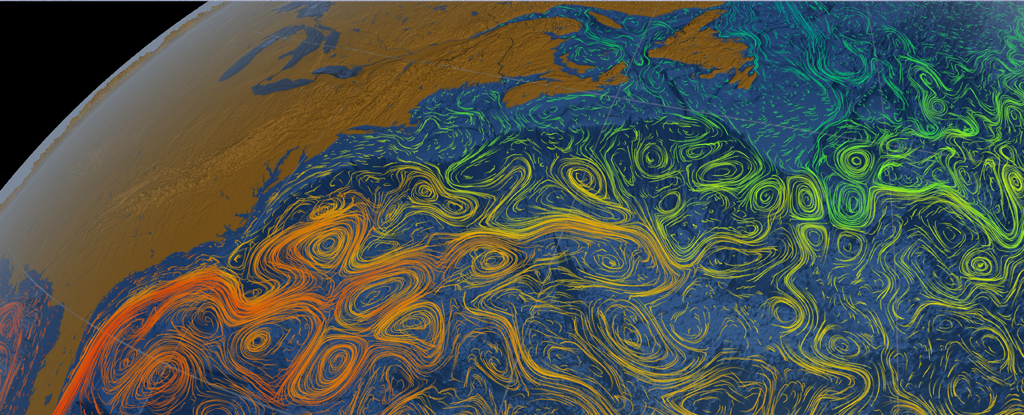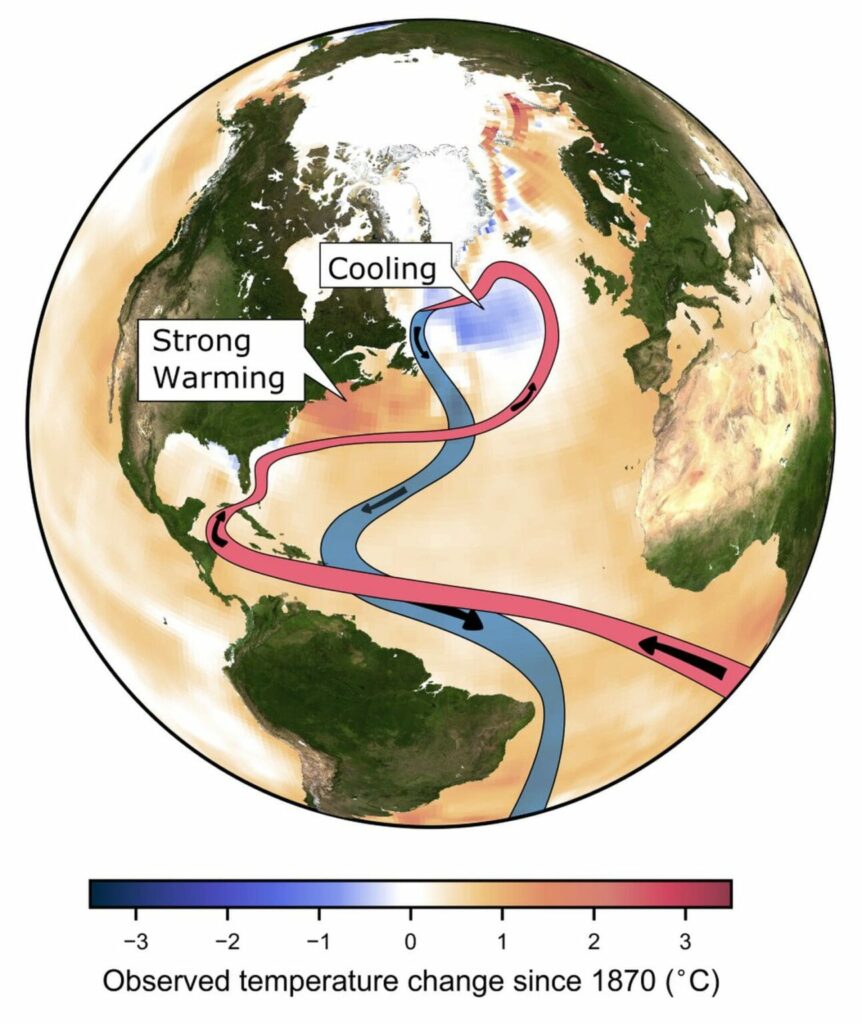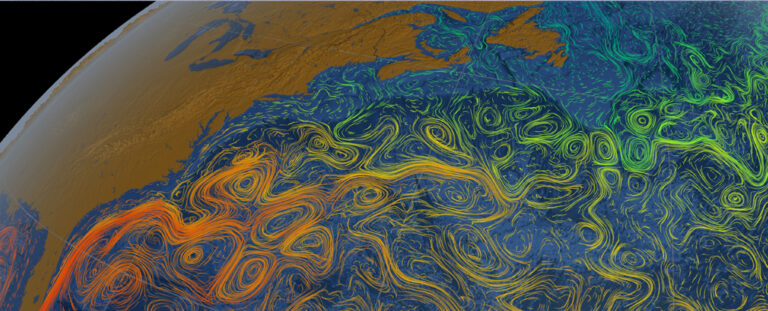Confirmed: A Significant Atlantic Ocean Current Is on the Brink of Collapse.
Regrettably, recent data confirms the alarming findings of a study conducted last year, which indicated that one of the Earth’s major ocean currents is on the verge of collapse. The consequences of this are dire, as stated by the authors of the latest study in an article for The Conversation. They warn that the changes in temperature, sea level, and precipitation will have a severe impact on society, and the climate shifts are unstoppable within the timeframe of human existence.

However, amidst this unsettling news, there is a glimmer of hope. Utrecht University oceanographer René van Westen and his team have identified an early warning system, which is a crucial aspect of the new study. This glimpse into the future could provide the world with some capacity to prepare for the impending challenges.
Van Westen and his colleagues explain that they have successfully developed a physics-based and observable early warning signal related to the salinity transport at the southern boundary of the Atlantic Ocean. This breakthrough offers valuable insight into the state of the Atlantic Meridional Overturning Circulation (AMOC), a vast network of ocean currents responsible for transporting warm salty water northward. As this water travels north, it cools and becomes denser. Eventually, the cold water sinks, allowing water from other oceans to fill the surface and complete the circulatory system by flowing back down south.
However, since the mid-1900s, the AMOC has been experiencing a significant slowdown. The increasing influx of freshwater from melting glaciers and higher rainfall has caused a drop in salt concentrations in the seawater. Consequently, the saline water becomes less dense, disrupting the sinking process and weakening the entire physical cycle. This disruption poses a serious threat to the stability of the AMOC and, consequently, the Earth’s climate system.

Now, through the use of ocean system modeling, van Westen and colleagues have discovered a method to identify when the AMOC ‘tipping point’ is approaching: the decrease in salinity will decelerate at the southernmost boundary of the Atlantic.
According to the authors, once a certain threshold is reached, it is likely that the tipping point will occur within the next one to four decades.
Direct monitoring of the AMOC has only been conducted since 2004, which is not a sufficient period of time to fully comprehend the trajectory of the current slowdown. Consequently, scientists have been relying on indirect indicators such as salinity levels to fill in the gaps in their understanding.
Although van Westen and their team have not yet integrated all the factors necessary for accurately predicting the timing of the AMOC collapse, they believe that this catastrophic event is much closer than what current simulations suggest.
The new modeling focuses on the tipping point caused by freshwater input, rather than attempting to forecast its exact timing. However, the resulting data indicates that the AMOC is far more sensitive to changes than most climate models have taken into account.
Stefan Rahmstorf, a climatologist from Potsdam University who was not involved in the study, explained for RealClimate that “the new study confirms previous concerns that climate models consistently overestimate the stability of the AMOC.”
The AMOC has a significant impact on Earth’s climate, making it a crucial tipping element in the climate system that researchers are closely monitoring. The collapse of the AMOC occurs cyclically over a million-year scale, and historical data suggests that the Arctic will expand southward during this period, resulting in a decrease in temperatures in northwestern Europe by as much as 15 °C. This phenomenon can disrupt tropical monsoons and further warm up the Southern Hemisphere. The subsequent chain of reactions will have severe consequences on entire ecosystems and global food security.
According to Rahmstorf, the new study contributes significantly to the growing concern regarding a potential AMOC collapse in the near future. He emphasized that ignoring this issue would be a grave mistake.
This research was published in Science Advances.
Do not forget to share your opinion with us to provide you with the best posts !




0 Comments